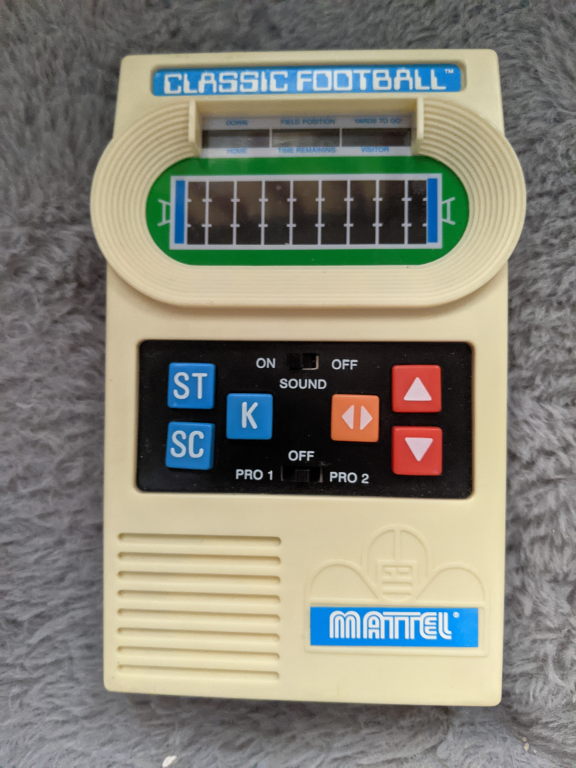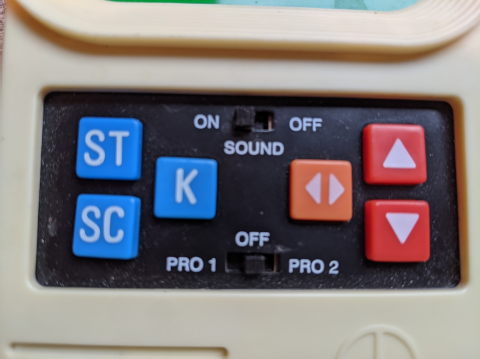In this episode we will take a walk down memory lane to find a device that almost every teenage boy in the late 1970's wanted to get their hands on. The portability, the blips the sounds the large directional buttons, Mattel's Football.
Mattel Electronics Football
Mattel Handheld Football
Mattel Electronics in June 1977 released a state of the art game that featured red diode horizontal dashes that a player could manuever to three different elevations representing the width of a football field, and advance the brighter player blip down the field while avoiding the dimmer opposition dashes. Mattel Football I was the second of the new handhelds released by the toy company following the success of their Auto Race game. At first the game was sold exclusively through Sears but the giant retailer decided after about 100,000 units were produced decided that the game would not be a big enough seller to be worth it so production was halted for a time. Sears prediction was recognized by Mattell as being off of the mark, and production was started up again and reached previously unknown levels! The rate of prodcution reachied as many as 500,000 units a week by mid-February, 1978. The game was a hit and were flying off the shelves at other eager retailers.

The original game had two levels of game play. Players could make their way down the field, dodging dotlike opponents to avoid being digitally tackled. Though it was simple, it became a highly sought-after gadget. It was very much a catalyst to producing a lasting relationship between kids and handheld electronic games. It was also the advent of interest in video game associated with football becoming a major market for electronics manufacturers.
According to the U.S. Patent 162792A the inventors were George J. Klose and Richard S. Chang. The very description of the game on the patent was;
"A novel game is disclosed featuring a playing field having at least three lanes and divided into at least six rungs. A gamepiece representing the player may be positioned in any one of the three lanes and is free to move in a first direction from one rung to the next; randomly generated obstacles advance in the opposite direction from rung to rung; the object of the game is for the player to avoid collision with the obstacle or obstacles."

Many have claimed it to be the most pirated handheld game of all time. In fact the original manufacturer did a couple of knock-offs of their own when in the year 2000 Mattel released a newer version of the game with new LED technology but still giving the game that classic feel and sounds. They called it Mattel Classic Football and a year later in 2001 released a much smaller key chain version of the device. According to an August 2001 article in Forbes magazine;
"Instead of the old light-emitting diode (LED) that lit the first games, the updated version uses a liquid crystal display (LCD) technology. And instead of the 9-volt battery required for the original, you can get by on two AA batteries now. But otherwise, Mattel says, game play is exactly the same as in the original: three buttons for control, one each for displaying game stats and score and one for kicking."
Whatever the version the game is a classic, though it may not meet the standards of the kids of this computer generation it was a classic break through gadget related to football that still has a softspot in the hearts of many from Generation X.


